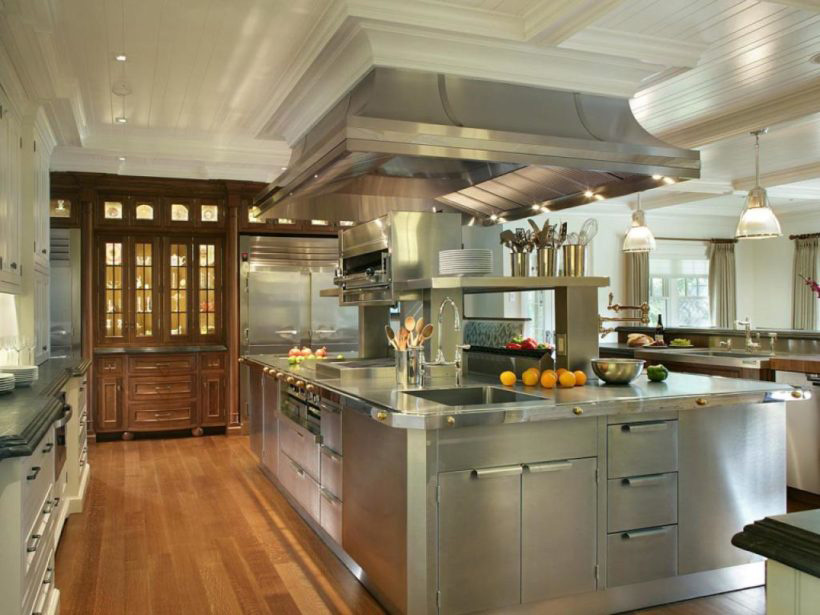Engineers and designers don’t always consider all of the benefits that custom stainless steel fabrication may bring to the table when it comes to a variety of applications because of the material’s typically higher cost. However, the benefits that come along with stainless steel may frequently justify the initial cost, as the material may give the best value over the length of a manufacturing project. This is because stainless steel is resistant to corrosion and oxidation. Stainless steel does not rust or corrode as other metals do, which is why it is used.
Let’s take a more in-depth look at the advantages of stainless steel, as well as the reasons why you should choose this powerful product for the metal fabrication demands specific to your business.
-
Fabrication Is Simple
People quickly realised that stainless steel worked well in other capacities, including construction, manufacturing, machinery, appliances, and even the aerospace industry, just like GS Forging. Stainless steel was initially used for armaments and fine cutlery, but people quickly realised that it worked well in other capacities.
Stainless steel is a material that is simple to store, move about, and operate with. It has a strong resilience to impact and does not grow brittle even when subjected to temperatures that are very cold or extremely hot. Despite its strength, stainless steel is malleable, which means it can be readily moulded and manipulated (if the appropriate tools and abilities are used) into the following:
- Plates
- Wires
- Bars
- Tubing
- Hardware
- Sheets
- Countless other products
When you combine the benefits of metal with the advantages of custom stainless steel fabrication, you may receive components that are exactly tailored to your project while retaining the highest possible level of efficiency and maintaining an affordable price point.
-
Low Maintenance
There is little you can do to maintain stainless steel throughout its long lifespan. It is advised that the surface be protected during manufacturing and installation to prevent contamination from dust, dirt, and other particulates.
Stainless steel is sanitary since it is non-porous and easy to disinfect after use. For most external uses, once or twice yearly cleanings with a light detergent and warm water are sufficient in regions with average precipitation. Stainless steel should be cleaned at least once a year with soap and water, although in coastal areas where it is exposed to deicer or salt, more frequent cleaning may be necessary.
-
Reduced Environmental Impact
As materials from building, manufacturing, and disposal pile up rapidly, businesses must seek eco-friendly alternatives. Stainless steel is not only recyclable but also simple to clean. Compared to other fabrication technical materials, custom stainless steel fabrication offered by GS forging has a small effect on the environment during its lifetime.
- At the end of its useful life, 85% of stainless steel gets recycled.
- 56% of the material is recycled into new stainless steel that is just as strong and long-lasting as the original.
- Carbon steel production accounts for 29% of all steel production.
Stainless steel scrap is lucrative, in great demand, and requires no sorting. High recycling rates promote process efficiency, reducing environmental impact, resource depletion, and energy consumption. Recycled steel may be recycled forever if product designs and recycling technologies allow it.
-
Durability
High corrosion resistance extends stainless steel’s lifetime. A coating of chromium oxide protects the steel’s iron from the air, water, and other corrosives. If oxygen is available, a scrape on the chromium oxide layer will heal itself.
Stainless steel may be utilised in settings where other metals would corrode, such as those containing acids or bases. Increasing the alloy’s chromium content improves its resistance to corrosion. High alloyed stainless steels are more resistant to corrosion from acids and alkaline solutions in addition to withstanding severe environments such as coastal temperatures, salt air, and high humidity.
-
Fire And Heat Resistant
Stainless steel’s resistance to heat and fire is another example of its resilience and toughness. Stainless is resistant to oxidation even at high temperatures, thus its strength is not diminished by prolonged exposure to heat. Again, chromium is responsible for this property, which makes stainless steel a great material to use in situations where avoiding fire and withstanding high temperatures are essential.
In situations where resistance to high temperatures is essential, chromium continues to play a leading role. It improves the metal’s capacity to withstand high temperatures while maintaining its strength and resistance to corrosion.
It is common practice to describe the high-temperature strength of a material in terms of its “creep strength,” which refers to the capacity of the material to resist being deformed after being subjected to a high temperature for an extended period of time. In this aspect, stainless steel is superior to other materials, making it the material of choice for many applications. This is because stainless steel is resistant to corrosion and oxidation.
Conclusion
Stainless steel is an alternative that has been shown to be both long-lasting and low-maintenance for a range of applications. It has a well-deserved and time-tested reputation as a sturdy, trustworthy, and simple metal that is easy to deal with. With custom stainless steel fabrication, you will be able to accomplish the objectives of the project more quickly and at a lower cost thanks to the integration of these one-of-a-kind features, which together provide a plethora of additional advantages.






Comments